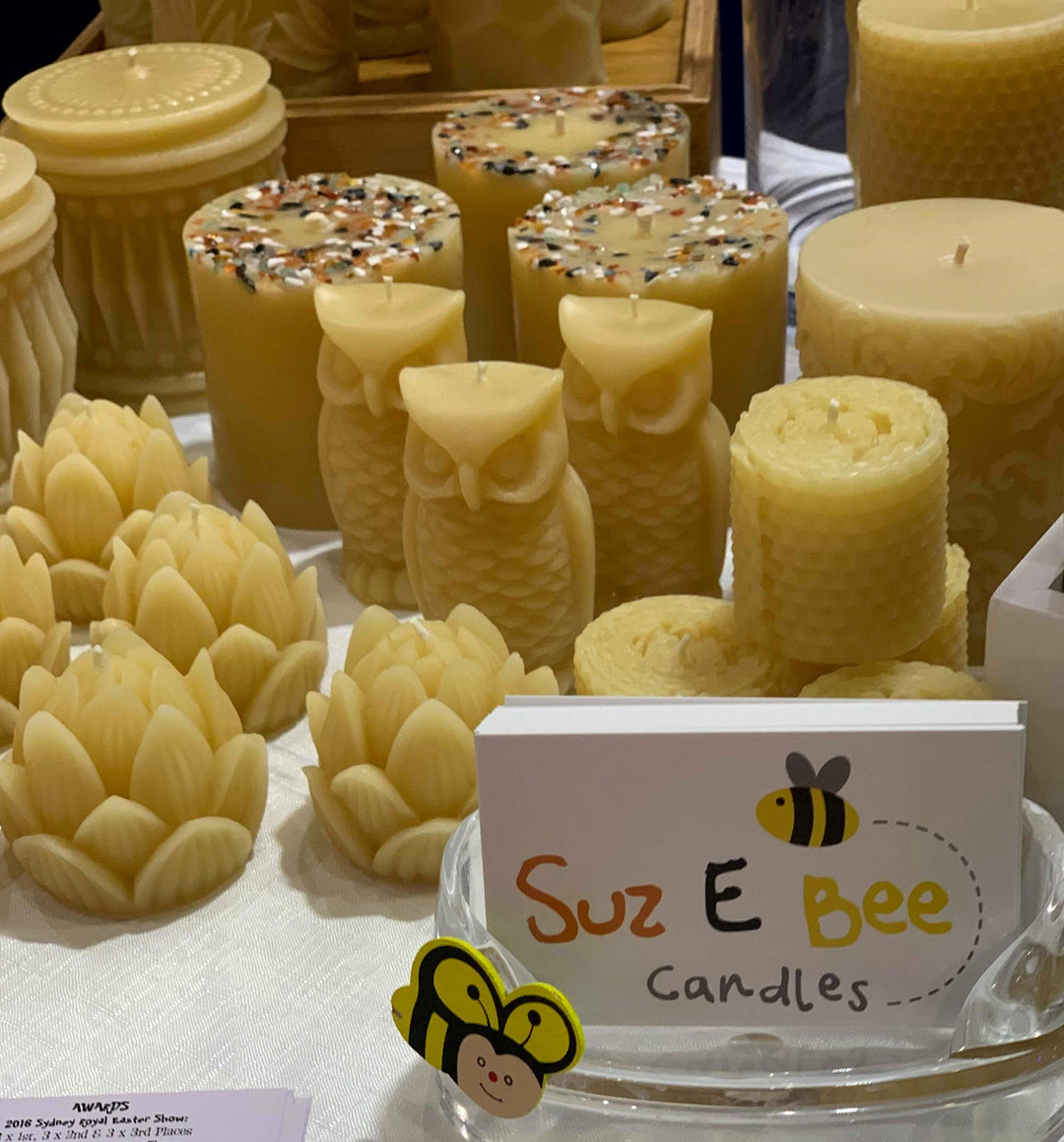Candles can do so much more than light up a room
Why pure Australian beeswax candles are beneficial to people with breathing issues and fragrance sensitivities, and for clearing the air
Whether you’ve made a romantic candle-lit dinner for two, created a soft ambience over a dinner party, or simply needed light when the power’s gone out, candles are a household necessity. But how can you tell what is good for you and what might be contributing to poor breathing or allergic reactions?
What’s in a regular candle?
The candles you see on supermarket shelves and in homeware displays, hardware stores or novelty shops almost always look the same, even if they come in various shapes, colours and sizes. Tapered, tea light, decorative or votive, candles that are commercially produced have a distinctive waxy smell. This is because commercially made candles are made by manufacturers in large batches by pouring melted paraffin wax into moulds. It’s the paraffin that gives that distinctive candle smell.
Paraffin wax is a soft but solid kind of wax that is either white or colourless. It is made from a mix of hydrocarbons normally derived from coal, petroleum or shale oil, making it a non-renewable substance. Since it’s a byproduct of these materials, paraffin is highly refined to make it usable for candles and other items, meaning it passes through multiple chemical treatments. Some candles made in unscrupulous factories may even have lead wicks. Because of these circumstances, paraffin candles are generally not good for people with allergies, sensitive skin, and lung conditions like asthma. This also means you probably shouldn’t be burning these kinds of candles around babies and young children.
What’s in scented candles?
Scented candles may be great to de-stress while in the bath, or to get rid of lingering pet smells in the home, but here’s what you need to know. Scented candles made of soy wax produce smoke that contains chemicals from when it was made. Similarly, paraffin contains a lot of toxic ingredients like acetone, benzaldehyde, camphor, ethanol, limonene, linalool, and methylene chloride to give candles specific scents. In addition, candle makers use phthalates, which are chemicals used to make plastics more flexible, in order to make these scents stick while the candles are burning. All these are necessary in paraffin candles, because the chemical composition of paraffin wax does not allow for more natural substances like essential oils to make it smell differently.
Now, when candles burn, they naturally release particulate matter into the air, because that’s the nature of burning any material. But since scented candles contain a whole lot of extra chemicals, they release a much higher number of particulates. These particulates are so tiny that they are able to get into your lungs, eyes and nose while the wick is lit and again when you blow it out, which in turn may lead to any number of mild to severe respiratory problems.
How pure beeswax candles can benefit your health
Beeswax candles, on the other hand, are an entirely different story. Beeswax is the only wax that is naturally created. Beeswax acts as an air ioniser that is able to purify homes naturally, ridding your home of pollens, dust, allergens, mould, mildew and other toxins, all whilst burning brightly and cleanly.
Suz E Bee Candles are made from 100% pure Australian-sourced beeswax and un-bleached cotton wicks. Keeping these wicks trimmed assures no smoke and no drips, so there is virtually no particulate matter to harm you and your lungs. No chemicals, no artificial substances, no health risks.
Hand rolled and poured in a variety of shapes and sizes, pure beeswax candles also make wonderful home décor items, and are perfect both for special occasions and everyday use. So, breathe easier knowing you aren’t burning and breathing in harsh toxins. Start using pure beeswax candles and see, smell and inhale the difference!





Leave a comment